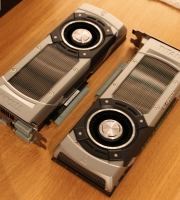
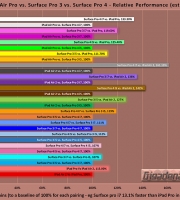
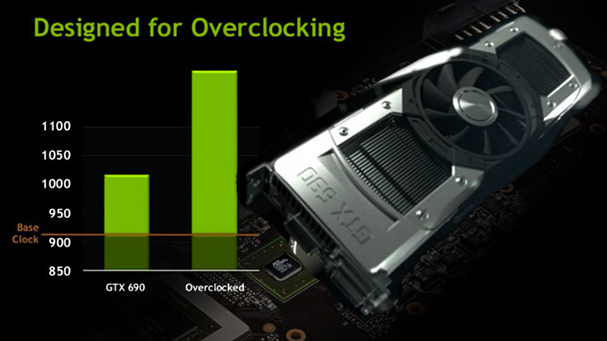
Following prolonged speculation, Nvidia finally elected to unleash its 28mn pixel devourer, the Kepler, at the end of March 2012. The GTX 680 proved to be a more than worthy response to rival AMD’s HD 7970, which had made its way into the retail channel two months earlier. With both companies having now played their hands on the single GPU front, Nvidia has chosen to keep its foot firmly planted to the floor and followed up with the almost dual GPU equivalent .
Evidence suggests that the GTX 690 is the closest we’ve yet come to having two flagship GPU’s bolted onto a single card that offers an identical level of performance to that of two separate cards, each with the same top tier GPU.
Hither to, cards such as the GTX 295 and GTX 590 from Nvidia as well as the HD 5970 and HD 6990 from ATI have emerged with significant compromises such as conservatively clocked GPU and/or memory in order to avoid excessive power consumption and heat. This left the coast clear to vendors like Asus to fill in the blanks with over-engineered monstrosities, these were as rare as a Cezanne water color and almost as expensive.
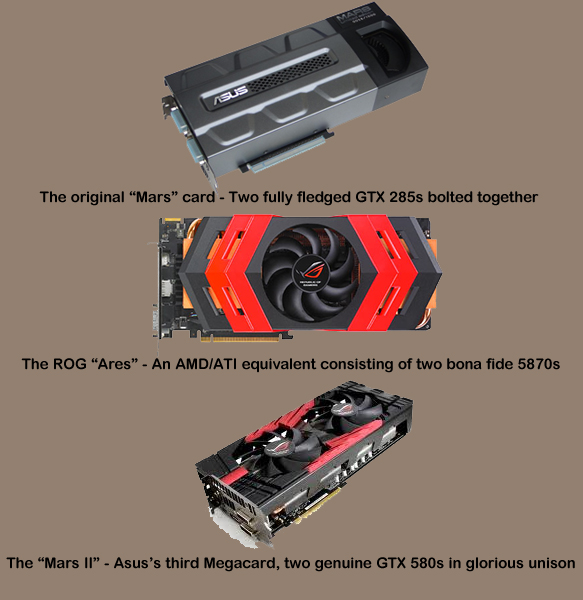
Sadly, it would appear that only one aspect of this analogy has altered, for the 690, though far more readily available than any of the cards above, will not part company with an e-tailer for much less than £850! Essentially, this means that the purchaser saves next to nothing in opting for one over two 680s. So, what are the advantages?
Firstly, overclocking aside, this is indeed the closest we’ve come to experiencing “flagship SLI performance” from a single card. The energy efficiency of the Kepler has meant that virtually no sacrifice was necessary in order to integrate two GPUs on the same PCB. The default GPU speed (base clock) is in fact 915mhz, just under 100mhz lower than on a stock 680.
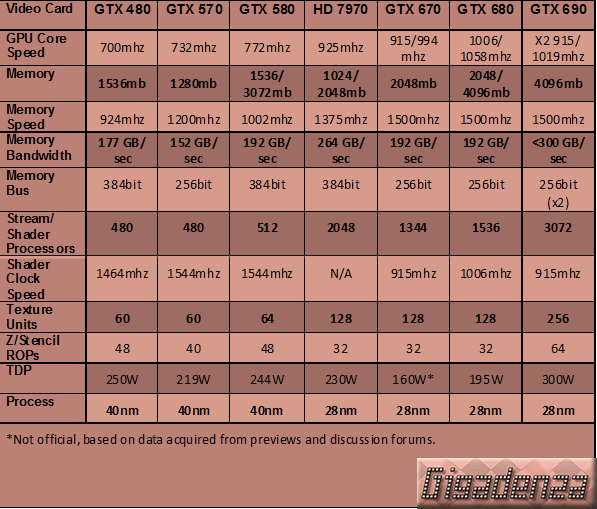
The “Boost Clock” frequency however, is a relatively more aggressive 1019mhz, bringing it to within a mere 40mhz of a vanilla 680. Moreover, the card’s 4gb of memory (that’s 2GB per GPU) is clocked at 6008mhz, exactly matching the frequency of its little brother. So what? Says you. These aren’t advantages. It’s slower, not by much, but slower nonetheless, yet no cheaper! I ask again, why should I choose one of these instead of a pair of 680s?
Well, one obvious reason is to preserve case space, a single card needs just two slots whereas two 680s require four.
Two top of the range cards, be they from AMD or Nvidia, generate a good deal of heat, even when compared to their dual GPU counterparts, thus, a marginally lower temperature is likely to be another benefit, which would in turn allow for a third, namely more ambitious over clocking.
Finally, the Kepler’s coup de grâce, besides cutting edge performance, is its reference level energy efficiency, especially when under load. Several detailed reviews have demonstrated that the GTX 690 consumes an average approximately 90 watts less under load than a pair of 680s. The big green eye grows ever greener.